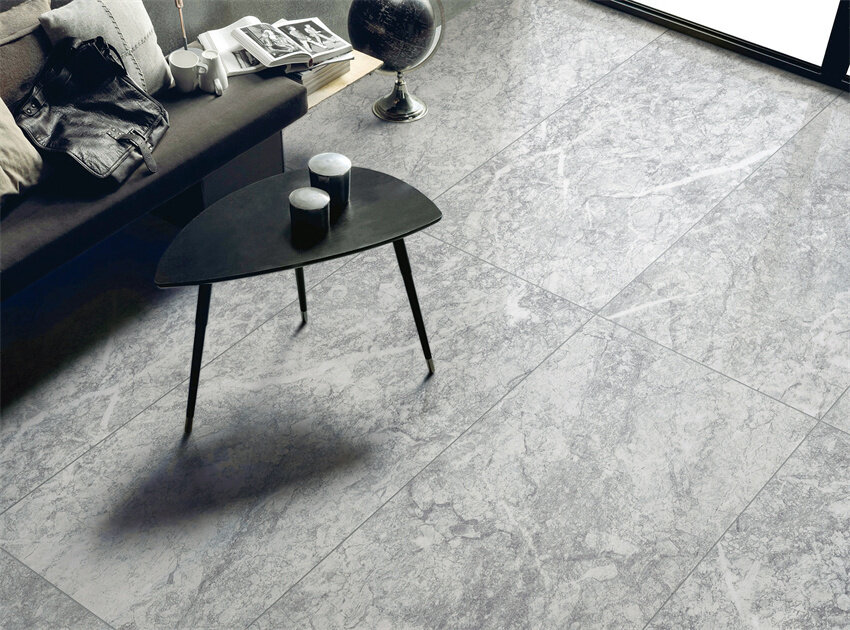
Porcelain floor tiles are renowned for their durability and elegant appearance, making them a popular choice for homes and commercial spaces alike.
To ensure your porcelain tiles maintain their pristine look and longevity, it's essential to regularly clean and seal them.
In this comprehensive guide, we'll take you through the step-by-step process of cleaning and sealing porcelain floor tiles, helping you preserve their beauty for years to come.
Porcelain floor tiles are a type of ceramic tile composed of fine clay fired at high temperatures. They are known for their exceptional durability, making them suitable for high-traffic areas. Due to their water resistance, porcelain tiles are commonly used in kitchens, bathrooms, and entryways.
Cleaning and sealing porcelain floor tiles is essential for several reasons. These include:
●Preventing Stains: Porcelain tiles are susceptible to staining from spills and dirt, which can mar their appearance.
●Enhancing Durability: Cleaning and sealing protect the tiles from wear and tear, extending their lifespan.
●Aesthetics: Regular maintenance keeps the tiles looking as good as new, maintaining the visual appeal of your space.
Before you begin, gather the following cleaning supplies:
●A mop
●A bucket
●A pH-neutral cleaner (specifically formulated for porcelain tiles)
●Soft cloths or microfiber towels
Using the right cleaning products is crucial to avoid damaging your tiles.
For sealing porcelain tiles, you'll need:
A penetrating sealer suitable for porcelain tiles
An applicator brush or roller
Clean, dry cloths for wiping
Choosing the correct sealer is essential for effective protection.

Begin by removing all furniture and objects from the area you intend to clean and seal. This prevents accidental damage to your belongings and allows you to clean every inch of the floor effectively.
To remove loose dirt and debris, thoroughly sweep or vacuum the floor. Pay special attention to corners and edges where dirt tends to accumulate. This step ensures a clean surface for the subsequent cleaning and sealing processes.
Follow these steps to create an effective cleaning solution:
●Fill the bucket with warm water.
●Add the recommended amount of pH-neutral cleaner according to the product's instructions.
● Mix the solution thoroughly.

Now, it's time to mop your porcelain floor tiles:
Dip the mop into the cleaning solution and wring it out until it's damp but not dripping.
Mop the floor in small sections, starting from one corner and working your way toward an exit.
Avoid saturating the tiles with water, as excess moisture can seep into the grout lines and cause damage.
For stubborn stains or grout stains, consider these techniques:
For coffee or wine stains, create a paste with baking soda and water, gently scrubbing the stain.
For grease stains, use a degreasing agent or dish soap mixed with warm water.
For grout stains, apply a grout cleaner and scrub with a grout brush.
Choosing the appropriate sealer is critical:
Opt for a penetrating sealer designed for porcelain tiles.
Read the manufacturer's instructions carefully to select the correct product for your tiles.
Follow these steps to apply the sealer:
●Pour a small amount of sealer onto the floor.
●Spread the sealer evenly using an applicator brush or roller.
●Allow the sealer to penetrate the tiles for the recommended time.
●Wipe off any excess sealer using clean, dry cloths.
●Allow the tiles to dry completely, typically for 24 hours or as per the product instructions.
In conclusion, the process of cleaning and sealing porcelain floor tiles is essential to maintain their beauty and extend their lifespan. By following the steps outlined in this guide and adopting a regular maintenance routine, you can ensure that your porcelain tiles continue to enhance the aesthetics of your space for years to come.